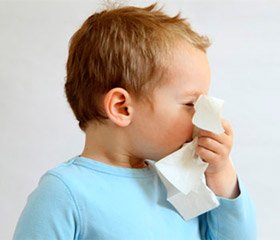Журнал «Здоровье ребенка» 3 (63) 2015
Вернуться к номеру
Features of the humoral immune response school-age children with early-onset asthma, according to acetylation polymorphism
Авторы: U.I. Marusyk — Bukovinian State Medical University, Department of Pediatrics and pediatric infectious diseases, Department of nursing and higher nursing education, Chernivtsi
Рубрики: Педиатрия/Неонатология
Разделы: Клинические исследования
Версия для печати
Introduction.
According to epidemiological studies suffer from allergies 25% children and adolescents. According to the WHO, the prevalence of asthma among children is 10%. In different regions of Ukraine, the figure ranges from 5 to 9% of child population. Given the literature data on the association of severe asthma with genetic polymorphism of N-acetyltransferase - an enzyme that determines feature metabolism, we considered it appropriate to assess the status of the features of humoral immunity in children with early-onset asthma.
The arm of the research: to study the individual indicators of the humoral immune system in school-age children with early-onset asthma, considering acetylation phenotypes to improve outcomes.
Methods.
It was conducted the complex examination of 34 school-age children with early-onset asthma (first manifested of disease was at early age). Over the course of the disease patients were divided into two clinical groups. The first clinical group included 16 patients who were evaluated slow type of acetylation (mean percentage of acetylated sulfadimezin in urine was less than 75.0%). The second clinical group formed 18 students, which is marked the fastest type of acetylation (mean percentage of acetylated sulfadimezin in urine was more than 75.0%).
All children performed immunological blood test II - III levels. The contents of serum immunoglobulin classes A, G, M determined by radial immunodiffusion. Contents of serum total immunoglobulin E (IgE), IL-4 and IL-8 were determined by enzyme immunoassay (EIA).
Results.
The concentration of IL-8 in serum children first clinical group was 6,8±1,2 pg/ml, and in those of the second group - 8,7±1,4 pg/ml (P> 0,05). The average content of interleukin-4 in the clinical group was 8,8±1,9 pg/ml and 8,5±1,9 pg/ml (P>0,05), respectively. Almost every second patient first clinical group (44,4%) recorded increased content of IL-4 (more than 4,0 pg/ml), whereas in the second group surveyed - only 28,6% of cases (Pφ>0,05).
Many patients with slow acetylytation early-onset asthma marked increased concentration of immunoglobulins G, M, A and IL-4 in serum, which indirectly indicates the severity of atopic inflammation in these people.
Conclusions.
1. The presence of slow type of acetylation in patients with early-onset asthma increases the risk of reducing the amount of interleukin -8 serum <5,3 pg/ml with the odds ratio – 4,5 (95% CI 2,3-8,9).
2. Slow acetylation phenotype of early-onset asthma increases the risk of registration high concentrations of IL-4 than 4,0 pg/ml (OR – 1,9), which is associated with atopic inflammation of the body and allows you to personalize treatment tactics in these patients.
Список литературы
1. World Health Organization. Bronchial asthma. Fact Sheet NE 307. – Geneva: World Health Organization, 2008.
2. Kim H.Y., DeKruyff R.H., Umetsu D.T. The many paths to asthma: phenotype shaped by innate and adaptive immunity. Nat. Immunol 2010; 11 (7): 577-584.
3. Yang I.V. Epigenetics and prenatal influences on asthma and allergic airway disease. Breath 2014; 10, 1: 25-31.
4. Kostromina V.P., Rechkina O.O., Mel`ny`k K.O. Risk factor for asthma in children. Astma ta alergiya 2013; 2: 21–24.
5. Gnatejko O.Z., Sadova O.M. Some aspects of early diagnosis of asthma in children. Zdorove rebenka 2009; 5(20):34–38.
6. Bragina E. Yu., Freidin M. B., Ten I. A., Ogorodova L. M. Polymorphism of xenobiotic metabolism genes of the glutathione S-transferase (GSTT1, GSTM1) and cytochrome P450 (CYP2E1 and CYP2C19) in patients with atopic bronchial asthma // Byulleten’ Sibirskogo Otdeleniya Rossiyskoy Akademii Meditsinskikh Nauk.–2005. – №13. – P. 121–125.
7. Tatarskyy P.F., Chumachenko N.G., Kucherenko A.M. Study on possible role of CYP1A1, GSTT1, GSTM1, GSTP1, NAT2 and ADRB2 genes polymorphisms in bronchial asthma development in children. Biopolymers and Cell 2011; 27,1: 66–73.
8. Barta J., Ghosh B. N-Acetyltransferases as markers for asthma and allergic. Atopic disorders current drug metabolism 2008; 9, 6: 546-553.
9. Ortemenka Ye.P. Significant indicators of airway hyperresponsiveness in the diagnosis of eosinophilic phenotype of asthma in children, depending on atsetilyatornogo polymorphism / Ortemenka Ye.P. // Interregional collection of scientific works with international participation (on the 70th anniversary of the Yaroslavl Medical Institute) ["Actual problems of modern pediatrics"]. – Yaroslavl`: Avers Plyus, 2014. - Р. 192-195.
10. Golden M.P. Leukotrienes / M.P. Golden, W.R. Henderson // The New England Journal of Medicine. – 2009. — № 357. — P. 1841—1854.
11. Nacak M., Aynacioglu A.S., Filiz A. Association between the N-acetylation genetic polymorphism and bronchial asthma. Br. J. Clin. Oharmacol 2002; 54 (6): 671-674.
12. Batra J. Sharma S.K., Ghosh B. Arylamine N-acetyltransferase gene polymorphism: markers for atopic asthma, serum Ig E and blood eosinophil counts. Molecular Biology 2009; 43 (1): 55-67.
13. Silvestri M., Pistorio A., Battistini E. IgE in childhood asthma: relevance of demographic characteristics and polysensitisation. Arch Dis Child 2010; 95: 979—984.
14. Kim H. Mazza J. Asthma. Allergy, Asthma and Clinical Immunology 2011; 7, 1: 1102-1111.

